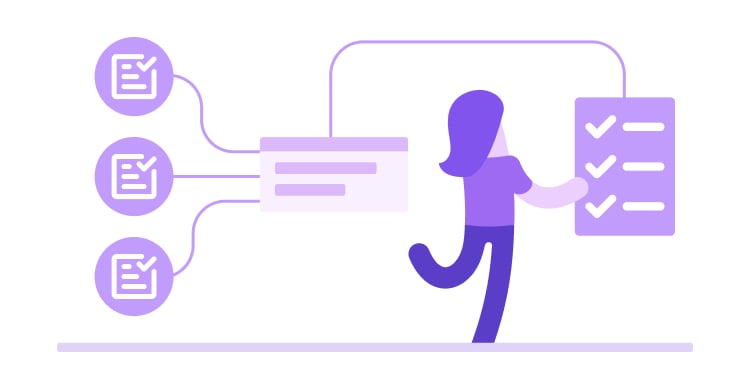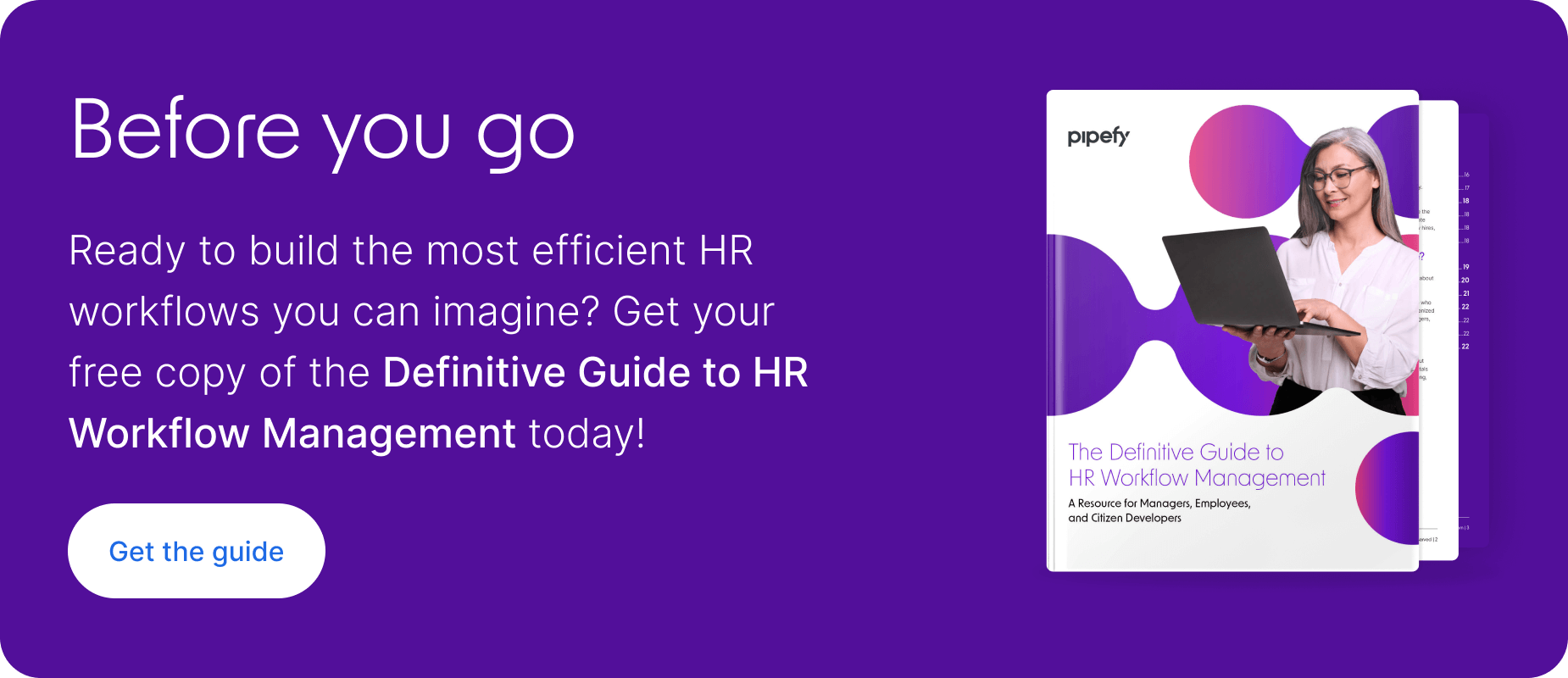ARTICLE SUMMARY
By approaching recruitment as a process rather than a one-and-done project, you can reach for the stars. It takes a little work to adjust the way you think about the hiring process, but it's worth the effort. Ideally, it should be specific and detailed, yet active and dynamic. Think of it as a GPS rather than a printed map. You can see the entire route at a glance, but if you need to change it, you can do so hassle-free. Streamlining your hiring pipeline makes recruiting easier for everyone on your team, helping them focus on evaluating the candidates’ potential rather than wasting time with manual work. As a result, the star candidates are hired.

Your team is the lifeblood of your business. You build it as you recruit, hire and onboard top talent—but do you ever find that star talent slips through your fingertips?
Right now, you may be asking yourself: “Have we lost a star candidate? How would we know?” You might even be remembering “the one that got away,” that perfect candidate who someone else hired before you had the chance to snap them up.
Even if the top talent has slipped through your fingers in the past, fear not. With the right recruitment process, you can keep it from ever happening again.
A recruitment management process lets you reliably and consistently draw on hiring best practices. Creating one isn’t difficult, but it does require thinking about hiring in a new way. You have to think about hiring as a process, not as a project.
Process vs. Project: What’s the Difference?
Despite what many people think, “process” and “project” are not synonyms. A project is a complete enterprise with a defined beginning, middle and end. Writing a book or a software program is a project. So is filling a vacant position.
Hiring, on the other hand, is a process. It’s either ongoing or repeats so often that it feels like it’s continuous. That vacant position, for example, isn’t the only one you’re ever going to fill. You could treat it that way, but then you’ll be reinventing the wheel every time you have to hire someone.
That’s what happens when companies try to use project management software or tools to coordinate hiring. Sometimes it works, but there’s always a gap between one project and the next.
That gap is where you lose your star candidates. It’s time to close it.
Developing Your Hiring Process: The Why and the How
Your hiring process should be specific and detailed, yet active and dynamic. Think of it as a GPS rather than a printed map. You can see the entire route at a glance, but if you need to change it, you can do so easily.
Start by defining the stages of your hiring process. Within each stage, you and your team will be performing individual tasks that have a common purpose.
📌 Learn how to build the perfect job opening process to make hiring easier.
Stage 1: Analyzing the Job and Its Requirements

Any time there’s a position you haven’t defined before, create a formal job analysis for it. Use multiple assessment types, such as:
- Interviews
- Questionnaires
- Observations
- Work logs
- Task inventories
If the job already exists, talk to the person who’s doing it now or who did it most recently. If the position is new, collaborate with those who created it and those who will be supervising the new hire.
Remember, when you invest time in defining a job, you make the hiring process smoother and quicker. You relieve people from having to make judgment calls when someone shows up with a certain skill set. This will fast-track the hiring process so you can start interacting with candidates.
Stage 2: Settling on What Matters

What’s important to your company when you’re filling a particular position? Maybe your priorities depend on the hard skills required for the job, as they would for positions at an engineering firm. Or, maybe your company is the kind that prioritizes certain personality traits like initiative, innovation and collaboration. In that case, soft skills and fit might be more important than industry knowledge.
Before you review resumes and decide who to interview, define the qualities you’re looking for in a candidate. Ask yourself:
- How many years of work experience should a candidate have? How much of that experience must be in a specific industry?
- Does the candidate need a certain level of education?
- Do they need a particular degree? Is “equivalent experience” acceptable?
- Does the candidate need any formal certifications or licenses?
Then talk with your team about what matters most and where you can compromise. Can you overlook a lack of a degree if a person has certain touchpoints in their career history? If someone gets along with your team, are you willing to help them fill in their skill gaps?
It may help to break down the skills and qualities you’re looking for into a sliding scale from “gotta have it” to “nice to have, but not a necessity.” For example:
- Required. Without these skills, a person could not succeed at the job
- Preferred. You’ll prioritize candidates with these skills, but if someone is a perfect fit otherwise, you have some wiggle room.
- Advantageous. If these skills appear on an application, that person will go directly into the “interview” pile..
- Best suited to a different position. These skills aren’t relevant to the job at hand, but they would be helpful in a different role within your company. These are the resumes you’ll save for later.
Going through this process doesn’t just save you time. It also keeps you from sending a polite rejection to someone who really should be getting an interview request. Automated recruitment software can help you keep track of all the qualities your team is looking for in a candidate while making it easier to pick out applicants best suited to a role.
Stage 3: Assessing Candidates You Already Have on File

There will be jobs that you don’t have to publicize. Often, the perfect candidate will be right in front of you—you just have to pick them out of the crowd. That said, depending on how many people you have in your candidate database, finding them might be like finding a needle in a haystack.
Don’t stress. It’s possible to pinpoint the right candidate—especially if you go about it methodically.
Start by reviewing the resumes you have on file. Specifically, look at the records of people that you wanted to hire in the past but couldn’t. Maybe the fit wasn’t right for the job they initially applied for, but the one that’s available now is perfect.
Keep resumes properly sorted and isolate those perfect-fit candidates with software that keeps you on track through every step of the hiring process. When you automate this part of the process, you reduce the risk of excellent resumes falling through the cracks.
Stage 4: Publicizing the Opportunity

If you were hiring for a job 20 or 30 years ago, you’d only need to post an announcement in your local paper and the pavement-pounders would be knocking on your door the next morning. For better or for worse, we’ve come a long way since those days.
Now, potential employees research available jobs without leaving their kitchen tables. They look up not only vacant positions but also the employers that are hiring for those positions. To get the best candidates, you have to market your company and its positions to those who are looking. That means you need to:
- Brand your job announcements with your logo and mission statement
- Link to positive employer reviews on sites like Glassdoor
- Promote open positions in multiple ways, including on social media and by email
- Use bullet points when listing job requirements
- Post on local message boards and in newspapers (yes, it still works)
- Announce your job in trade publications
It’s a lot to track, so delegate and automate wherever you can. Maintaining a reliable flow of information from the beginning of the process keeps everyone on the same page. When the resumes start rolling in, interdepartmental communication services like Pipefy’s make it easier to agree on which resumes merit an interview and which can be set aside. As the process goes on, those same services let you keep managers and candidates updated on the status of applications.
Stage 5: Determine the Structure of the Interview Process

The better your interview process is, the more you’ll impress top candidates. You’ve already done the bulk of the work by identifying and prioritizing requirements. The next step is to determine who will conduct which evaluation, including phone screening and any necessary skills testing.
Be specific about planning your interview process, too. Who will meet with the candidate first? How many stages of in-person interviews will you have? Consider the complexity and level of the position, but also think about what makes a person a good fit at your company.
A Caveat on Process
Resist the urge to look at this workflow as something prescriptive. Process management, unlike project management, has to be adaptable to the needs of the team.
You might find that some members of your team are working on Stage 2 tasks while others are still on Stage 1. You may notice that you have to start the hiring process for Position B before you’ve finished hiring for Position A.
It’s all okay! As long as you can stay flexible within your defined framework, you’ll be fine. Sure, it sounds difficult at first, but there are ways to make it easier.
Take Pipefy’s plug-and-play templates, for example. Pre-designed and fully customizable, they provide you with the ideal blend of structure and flexibility.
The Power of a Template
Some parts of the hiring process are the same from company to company. You collect resumes, weed out less attractive candidates and start the interview process. Plug-and-play recruiting templates take those consistent elements and transform them into an easy-to-use workflow, guiding your team through the required steps:
- View data from candidate applications
- Screen out unqualified candidates
- Assign and view results of skills testing
- Select candidates for interviewing and manage interview scheduling
- Collect candidate references
- Send job offer or “no thank you” letters
Smart templates, like the recruitment template from Pipefy, are fully customizable. You fill in the qualifications and preferences that matter to you, cutting out those that don’t, so all you see is what matters.
Meanwhile, the template automates as much as possible from the get-go. Instead of allocating staff hours to sending follow-up emails and finding interview slots, the template does that for you. You’re free to focus on finding the perfect candidate.
Improve Your Process and Capture Your Star Candidates
By approaching recruitment as a process rather than a one-and-done project, you can reach for the stars—and hire them too! It takes a little work to adjust the way you think about the hiring process, but it’s worth the effort. Plus, Pipefy helps you keep track of all the most important details along the way.
Streamlining your hiring pipeline makes recruiting easier for everyone on your team. With the right plan and the right software to back it up, you can save time, prevent bottlenecks and never again let that perfect candidate get away.






